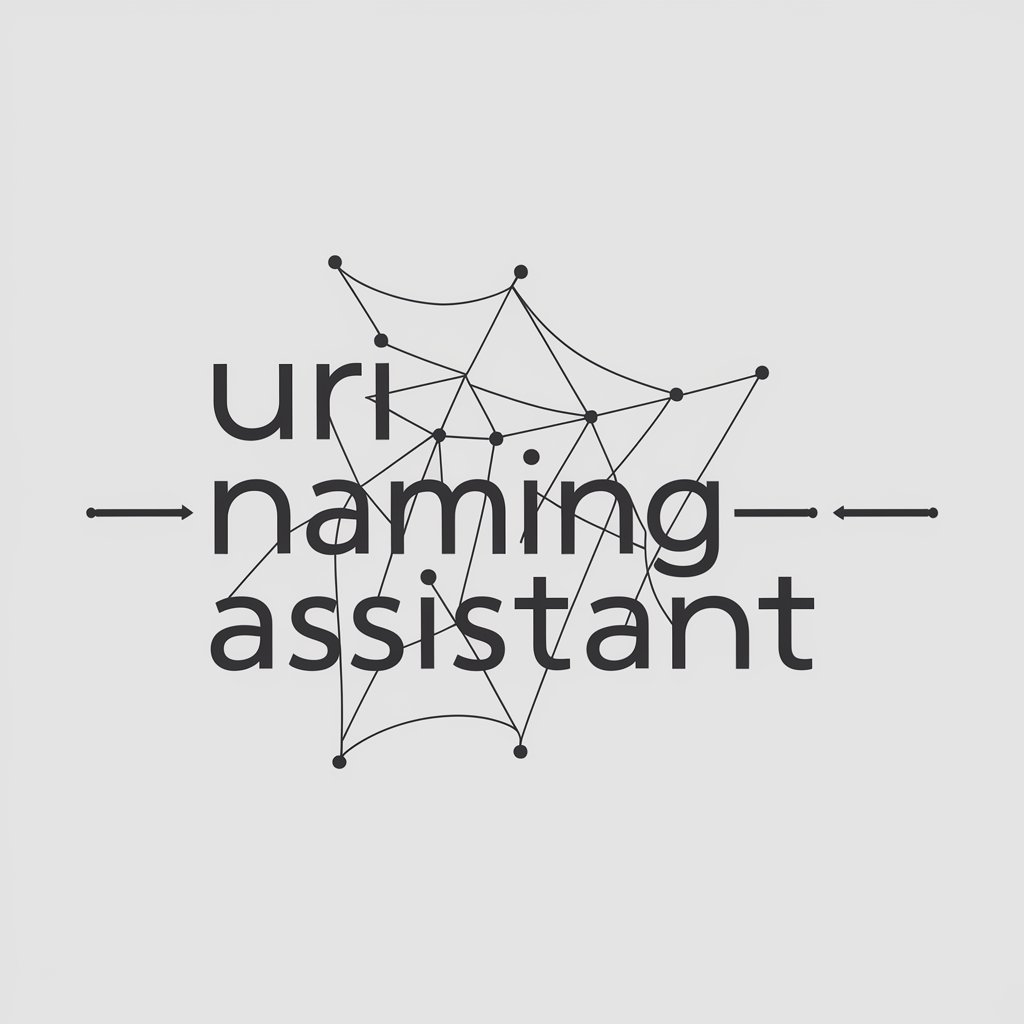RESTful URI Namer - RESTful URI Creation Tool

Hello! Need help naming RESTful URIs? I'm here for you.
Streamline your API with AI-powered URI naming.
Design a clean, modern logo for a RESTful URI naming service.
Create a logo that represents structure, order, and web development for a URI assistant.
Generate a modern logo using lowercase letters and web connectivity elements.
Design a logo incorporating symbols of clarity and structure for a RESTful URI naming tool.
Get Embed Code
Introduction to RESTful URI Namer
RESTful URI Namer is a specialized tool designed to assist in creating URIs (Uniform Resource Identifiers) that adhere to RESTful conventions, which are best practices for designing networked applications. The core purpose is to ensure that URIs are intuitive, easily understandable, and follow a consistent pattern that aligns with the actions they represent in a RESTful API. This involves using lowercase English plural nouns to represent resources, connecting words with hyphens for readability, and specifying the HTTP method to indicate the action (GET, POST, PUT, DELETE). For example, to retrieve a list of books, a RESTful URI might be 'GET /books', and to add a new book, 'POST /books'. Powered by ChatGPT-4o。

Main Functions of RESTful URI Namer
URI Construction for RESTful APIs
Example
GET /users, POST /user-profiles
Scenario
When developers are designing APIs for web services, they use RESTful URI Namer to generate URIs that clearly indicate the resource and action. For instance, retrieving user data or adding a new user profile.
Standardization and Best Practices
Example
PUT /user-profiles/{id}, DELETE /blog-posts/{id}
Scenario
Ensuring consistency across an API by using a tool that automatically adheres to RESTful best practices helps maintain a clean, organized API documentation and simplifies the development process.
Ideal Users of RESTful URI Namer Services
Web Developers and API Designers
Professionals involved in developing web services and APIs who need to ensure their URIs are intuitive, consistent, and follow RESTful standards. RESTful URI Namer helps streamline their design process.
Project Managers and Architects
Project managers and system architects who oversee the development of web applications and services. They benefit from using RESTful URI Namer to enforce naming conventions and standards across projects, leading to more maintainable and scalable systems.

How to Use RESTful URI Namer
1
Initiate your journey with RESTful URI Namer by exploring its features without any requirement for sign-up or subscription, ensuring a hassle-free trial experience.
2
Identify the type of resource you wish to manage through your API, focusing on what the resource represents in a plural and lowercase format.
3
Decide on the action you intend to perform on the resource, such as retrieval, addition, modification, or deletion, and match it with the corresponding HTTP method (GET, POST, PUT, DELETE).
4
Compose your RESTful URI by combining the plural form of the resource with hyphens for multi-word names, and prefixing it with the chosen HTTP method.
5
Test the constructed URI within your development environment to ensure it aligns with RESTful standards and efficiently interacts with your backend.
Try other advanced and practical GPTs
幼稚園児向け AI家庭教師 ポッポくん
Empowering preschool learning with AI

Affiliate Marketing Mentor
Empowering your affiliate success with AI

Viral Genius
Amplify your social reach with AI

Artificial Innovation by Diadibi
Empowering Innovation with AI

Ed U. Cator
Tailoring Education with AI

Cody Linkwell
Empowering Digital Success with AI

Java Namer
AI-powered Java Naming Simplified

Refusal
Empower your no with AI precision.

English Word Chain Master
Expand your vocabulary with AI-powered fun!

Poznań Dialect Translator
Bridging Cultures with AI-Powered Dialect Translation

セキセイインコ君
Chirp your way to fun learning with AI

Aprende Python
Empower your coding journey with AI-powered Python learning.

Frequently Asked Questions about RESTful URI Namer
What is a RESTful URI Namer?
RESTful URI Namer is a tool designed to help developers create URIs for their RESTful APIs, adhering to conventions such as using lowercase, plural nouns and hyphens to separate words.
Why should URIs be lowercase and plural?
Lowercase URIs ensure uniformity and avoid case sensitivity issues across different platforms. Plural nouns indicate collections of resources, aligning with REST principles.
How do I handle URIs for resources that involve two words?
For resources with names comprising two or more words, use a hyphen to connect them. For example, use 'user-profiles' for a resource named 'UserProfile'.
Can RESTful URI Namer help with nested resources?
Yes, it can guide on structuring URIs for nested resources by maintaining a clear hierarchy. For instance, 'posts/{post-id}/comments' for comments on specific posts.
What are the benefits of using RESTful conventions in URI naming?
Following RESTful conventions enhances clarity, consistency, and predictability in API design, making it easier for developers to understand and use the API effectively.
